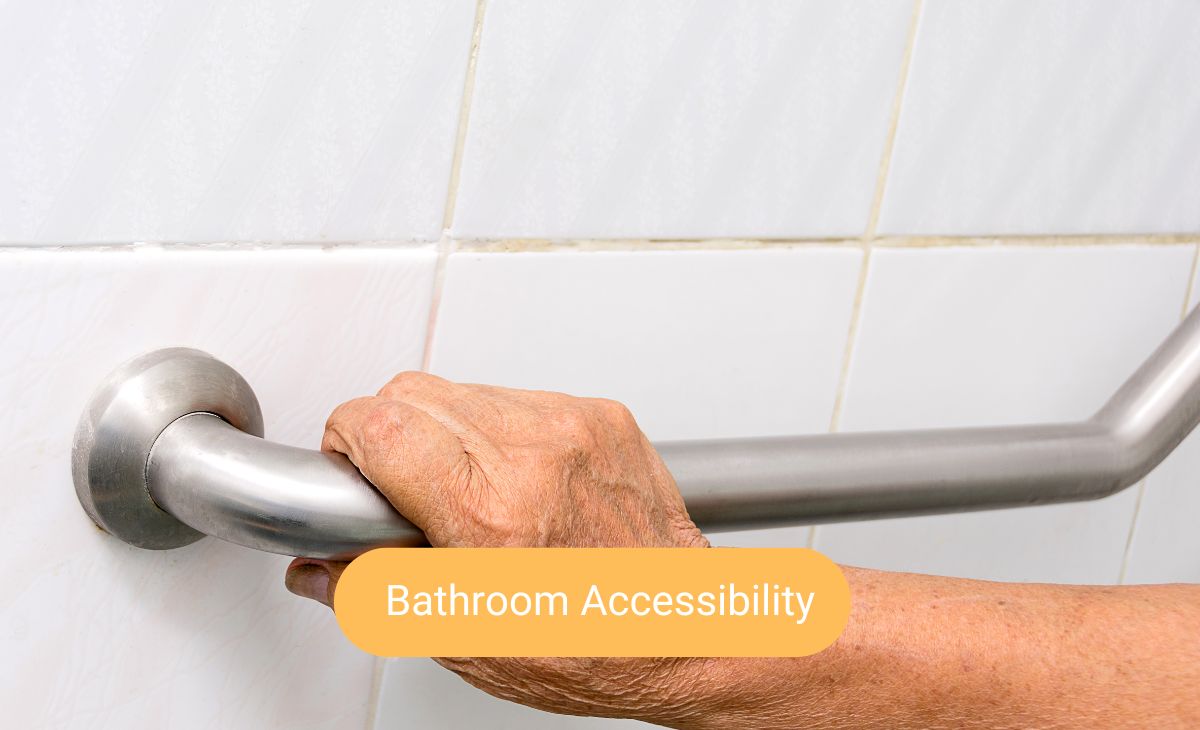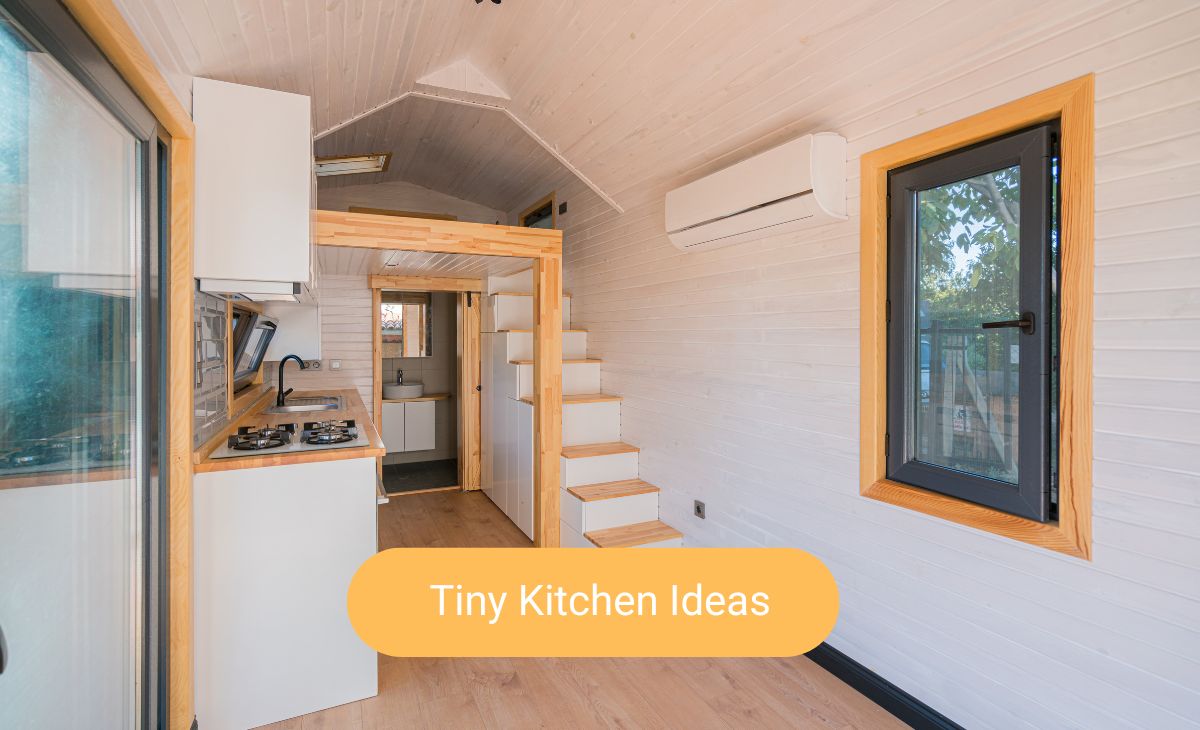As we age, bathroom safety becomes a critical concern. How do you enhance the bathroom to make it safe and accessible for the elderly? This article will explore a variety of bathroom accessibility options for the aging, such as support rails, slip-resistant flooring, and smart toileting solutions, to help you create a space where safety and independence go hand in hand.
Key Takeaways
Bathroom modifications like grab bars, slip-resistant flooring, and space for maneuvering are essential for senior safety and accessibility.
Simple changes to toilets and sinks, such as raised seats and height-adjustable designs, can vastly improve comfort and independence for elderly individuals.
Investing in walk-in showers and tubs, as well as considering future needs and progressive conditions, is key for creating a bathroom that adapts to the evolving needs of seniors.
Essential Modifications for Small Senior-Friendly Bathrooms
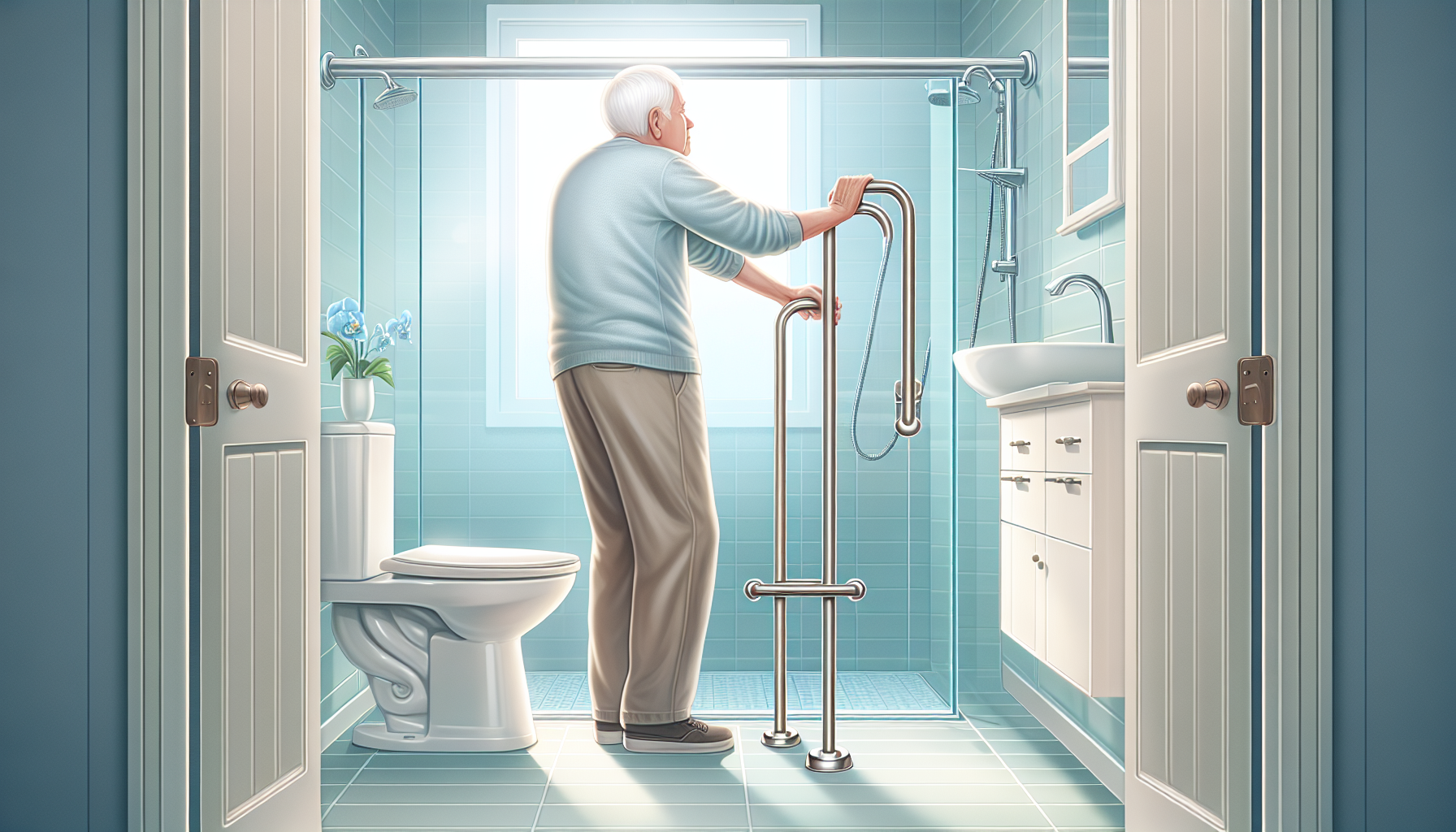
Bathrooms aren’t typically designed with seniors in mind. The hard surfaces, tight spaces, and often slippery floors can make it a dangerous place for those struggling with balance or mobility. However, with some essential modifications, you can transform this space into a senior-friendly haven.
Shall we delve into some of these pivotal transformations?
Grab Bars: A Must-Have for Stability
Ever thought about how much we rely on our strength and balance when using the bathroom? For seniors, this can become a daily challenge. Installing grab bars around the toilet, sink, and shower areas can provide a helping hand, offering necessary support and stability. Not only do they prevent accidents, but they also instill a sense of security and confidence for seniors during their bathroom routines.
From toilet safety rails to shower handrails, these indispensable elements significantly enhance bathroom safety and accessibility.
Slip-Resistant Solutions for Shower Floors and Bathroom Floor
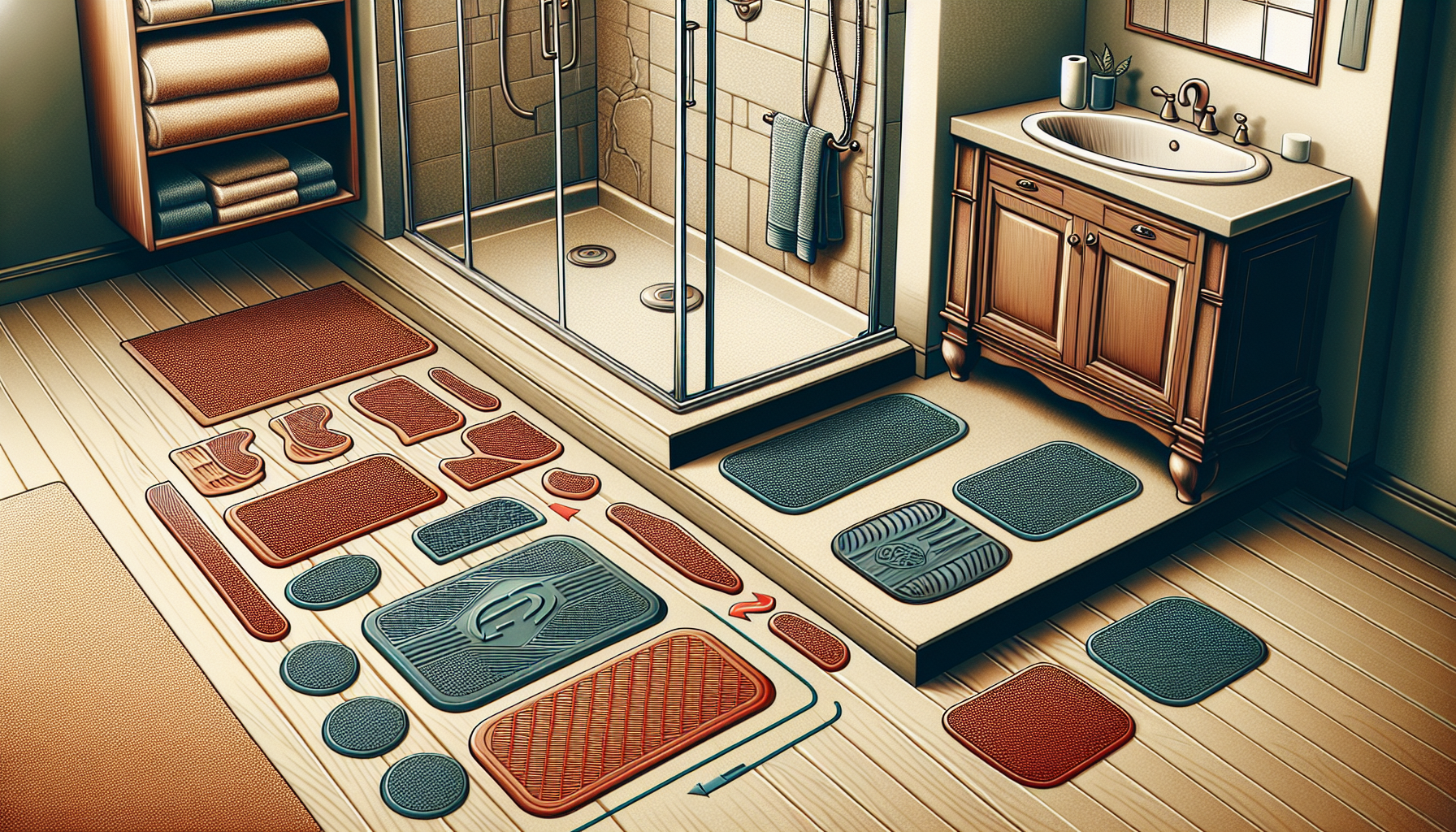
Slips and falls are a common concern for seniors, particularly in the bathroom where wet, slippery surfaces are abundant. To combat this, installing slip-resistant flooring and using a non slip mat can be a game-changer. From suction cup mats to textured surfaces, these solutions provide an extra grip underfoot, reducing the risk of slips and falls.
Don’t forget, keeping the bathroom floor clean and dry is just as crucial in accident prevention. Prioritize safety!
Accessibility in Movement: Room to Navigate
A cramped bathroom can be a nightmare for seniors, particularly those using mobility aids. Ensuring enough open space in an accessible bathroom not only allows for comfortable movement but also accommodates wheelchairs, walkers, or other assistive devices, thus improving bathroom accessibility.
One way to achieve this is by installing sliding doors, which can be easily removed during emergencies, ensuring easy access and improved safety. After all, a bathroom should be a place of comfort, not a navigation challenge!
Adapting Your Existing Toilet for Enhanced Safety
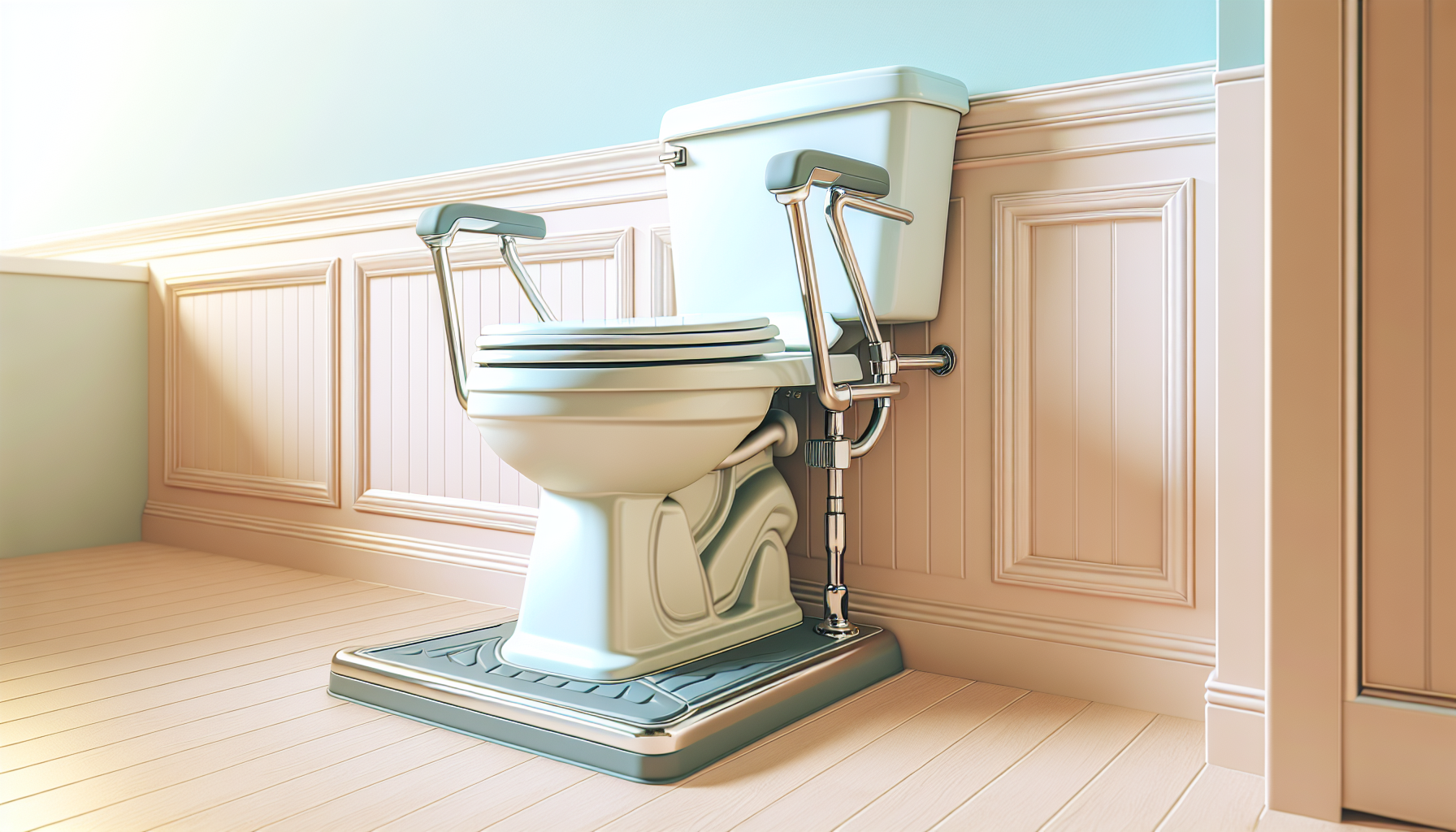
It’s time to discuss the throne, the porcelain queen – the toilet. It’s something we all use multiple times a day, and yet, it can pose significant challenges for seniors. Difficulty sitting down or standing up due to low toilet seats or leg weakness is common.
Yet, modifying your current toilet can significantly improve seniors’ comfort and safety.
Raised Toilet Seats: Easing the Strain
Did you know that a raised toilet seat can significantly reduce the strain of sitting down and getting up? It’s a relatively simple modification that can provide immense benefits, especially for those with arthritis or general mobility issues. The good news is that there’s a range of materials and heights available, ensuring there’s an option suited to everyone’s needs.
Plus, it’s a cost-effective solution compared to full-scale bathroom remodeling, offering practical support for seniors at a lower expense.
Lever Style Handles for Easier Use
Traditional doorknobs can be a hassle, especially for seniors with arthritis or grip issues. Enter lever-style handles! These are designed to be easy-to-use alternatives, operable with minimal effort, and do not require the same level of grip strength as turning a knob.
By merely substituting your door handles with lever-style ones, you’ll significantly increase the ease and accessibility of your bathroom. Simple, isn’t it?
Shower Adaptations for Aging in Place
Showering should be a refreshing and relaxing experience, regardless of age. However, for seniors, it can sometimes be a source of anxiety due to the risk of slipping or falling. But worry not! With the right adaptations, you can transform your shower area into a safe, comfortable, and accessible space.
Let’s look into some adaptations that can make showering more comfortable for aging individuals.
Walk In Showers: Barrier-Free Bathing Experience
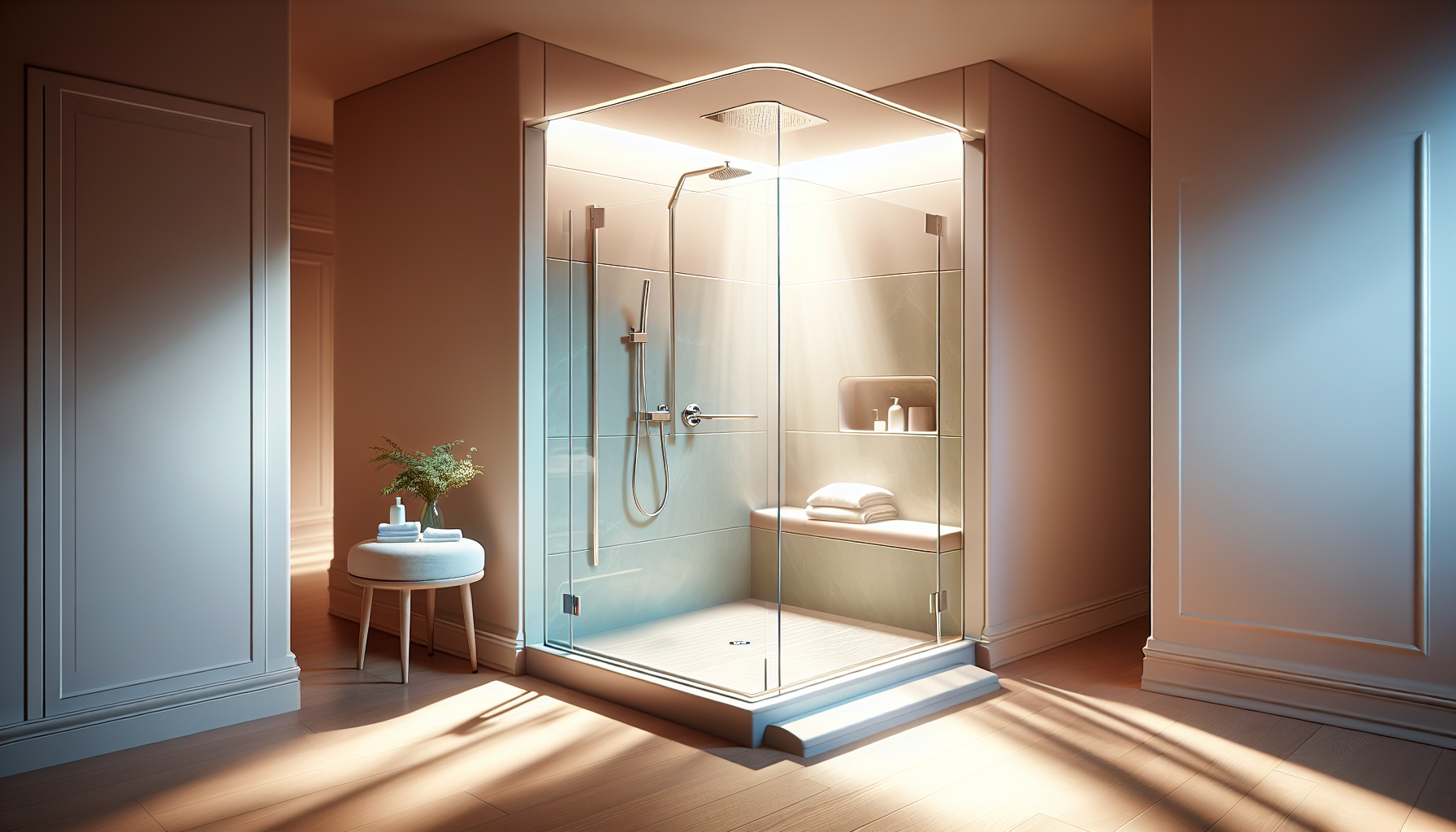
One of the most prominent adaptations for a senior-friendly bathroom is a walk-in shower. Unlike traditional showers, walk-in showers provide a barrier-free bathing experience with low thresholds, making entry and exit safer and easier. And for those who prefer an enclosed shower space, glass shower doors can be paired with walk-in showers, ensuring privacy while maintaining easy access.
It’s like having your own personal spa at home!
Secure Seating: Installing Shower Seats and Benches
Ever thought of having a seat while you shower? For seniors, this can be a game-changer. Shower seats and benches provide a stable place to rest, reducing fatigue, and minimizing the risk of falls while bathing.
From fold-down seats to large molded seats, there’s an option to suit everyone’s needs and preferences on the shower floor. So, take a seat and enjoy a relaxing, safe shower.
Hand Held Shower Heads: Flexibility and Control
A handheld showerhead is another great addition to a senior-friendly bathroom. With adjustable settings, seniors can control the height, angle, and water pressure, ensuring a more comfortable shower experience. Plus, the ability to shower while seated is a bonus for those with balance or mobility issues.
Equipped with the suitable showerhead, showering becomes a seamless experience!
Navigating Bathtub Challenges with Smart Solutions
Bathtubs: they can be a haven of relaxation but also a source of anxiety for seniors. The high sides and slippery surfaces of a traditional tub can pose significant hazards. But don’t fret! With smart solutions, you can navigate these challenges and make the bathtub a safe and enjoyable place once again.
Walk In Bathtubs: Safe Entry and Exit
Walk-in bathtubs, also known as walk in bathtub, are a game-changer for seniors. They offer:
Low-entry access doors
Anti-slip floors
Integrated seating
Doors that can swing inward or outward, providing extra interior space and facilitating easier access.
These safety features make walk-in bathtubs a safer and more comfortable bathing experience for seniors.
While they might require an initial investment, walk-in tubs can markedly boost the bathroom safety and independence of seniors. Investing in a walk in tub can be a wise decision for enhancing comfort and security.
Bath Lifts: Assisting with Tub Access
For those who find walk-in bathtubs impractical due to space, financial, or installation constraints, bath lifts present a suitable alternative. These devices assist with tub access by mechanically lowering and raising individuals in and out of the tub.
Put simply, they turn the process of entering and exiting the bathtub into a task as straightforward as pushing a button!
Convert an existing bath with a bathtub cut out kit
If you’re looking for an affordable solution to enhance bathtub safety, look no further than a bathtub cutout kit. By modifying the existing bathtub, these kits lower the step-over height needed for entry and exit, significantly reducing the risk of falls and injuries. Plus, they can be installed quickly, minimizing disruption in the home.
Thus, even in the absence of a comprehensive bathroom renovation, you can still substantially enhance its safety for seniors.
Enhancing Overall Bathroom Safety with Thoughtful Design
While specific modifications are crucial, the overall design of the bathroom also plays a vital role in enhancing safety. Some important design considerations include:
Adequate lighting to ensure visibility and reduce the risk of accidents
Clutter control to minimize tripping hazards
Non-slip surfaces, such as textured tiles or mats, to prevent slips and falls
It’s the little things that can make a big difference in creating a safe bathroom environment.
Let’s further examine these components.
Good Lighting: Illuminating the Space
Good lighting is crucial in any space, but it’s especially important in the bathroom. Poor visibility can increase the risk of falls and accidents. That’s why it’s vital to ensure that the bathroom is well-lit, with light controls within easy reach.
Indeed, one can’t evade an obstacle they cannot see, correct?
Reducing Trip Hazards: Keeping the Bathroom Clear
A cluttered bathroom is a hazardous bathroom. Loose rugs, unnecessary furniture, or even small clutter can become potential trip hazards. That’s why it’s essential to keep the bathroom clear and navigable, with frequently used items stored within easy reach and at eye level to avoid stretching or reaching that could cause accidents.
Keep in mind, a clutter-free bathroom is synonymous with a safe bathroom!
Addressing Sink and Vanity Accessibility
The sink and vanity are essential parts of any bathroom. But for seniors, especially those using wheelchairs, traditional designs may not be the most accessible. Let’s examine the adjustments that can be made in these areas to boost safety and usability.
Height-Adjustable Sinks for Wheelchair Users
Imagine having to stretch or bend uncomfortably every time you need to use the sink. Unfortunately, this is a reality for many wheelchair users. But with height-adjustable sinks, wheelchair users can independently use the sink by adjusting it to their preferred level.
Whether manual or electric, these adjustable systems can make a significant difference in the comfort and accessibility of the bathroom.
Clearing Under-Sink Space: Open Design for Easy Access
While we’re on the subject of sinks, let’s not forget about the under-sink space. Traditional cabinetry often compromises this area, making it inaccessible for wheelchair users. But by removing the cabinet door or opting for an open design, you can provide unhindered access for wheelchair users, allowing them to reach the faucet and water controls comfortably.
The goal is to customize the space to your needs!
Tailoring Bathroom Modifications to Individual Needs
While we’ve touched on various modifications and adaptations, it’s important to remember that every senior’s needs are unique. What works for one individual may not work for another. Therefore, it’s crucial to tailor bathroom modifications to suit individual needs and circumstances.
Professional Consultation: Getting It Right
Whether it’s deciding on the right type of grab bars or determining the height of the toilet seat, professional consultation is key to getting it right. Specialists can provide personalized advice based on the senior’s mobility, body size, and height, ensuring that the modifications are both safe and effective.
Therefore, before you commence any substantial changes, ensure to seek professional advice!
Considering Progressive Conditions
When planning bathroom modifications, it’s also crucial to consider future needs. Aging often brings progressive conditions or deteriorating mobility, which may require additional aids or adaptations down the line. By future-proofing bathroom modifications, you can ensure that the bathroom remains accessible and safe as the senior’s needs evolve.
Ultimately, it’s wiser to be future-ready than to be surprised by unexpected changes.
Summary
In conclusion, creating a senior-friendly bathroom goes beyond just adding grab bars or non-slip mats. From walk-in showers and raised toilet seats to thoughtful lighting and clutter control, each modification plays a crucial role in enhancing safety, comfort, and independence for seniors. While the process may seem daunting, remember that professional help is available, and it’s okay to take it one step at a time. After all, the goal is to create a space that allows our loved ones to age gracefully and comfortably in a familiar environment.
Frequently Asked Questions
What are some essential modifications for a senior-friendly bathroom?
To make a bathroom more senior-friendly, consider installing grab bars, slip-resistant flooring, providing ample space for navigation, adapting toilets with raised seats and lever-style handles, and installing walk-in showers and bathtubs. These modifications can greatly improve safety and accessibility in the bathroom.
How can I make the shower safer for seniors?
You can make the shower safer for seniors by installing walk-in showers, secure seating such as shower seats and benches, and handheld showerheads. These changes can greatly reduce the risk of slips and falls in the shower.
How can I enhance overall bathroom safety?
To enhance overall bathroom safety, optimize lighting, reduce trip hazards, use non-slip surfaces, keep the bathroom clear of clutter, and ensure good visibility. These steps can help prevent accidents and ensure a safer environment.
